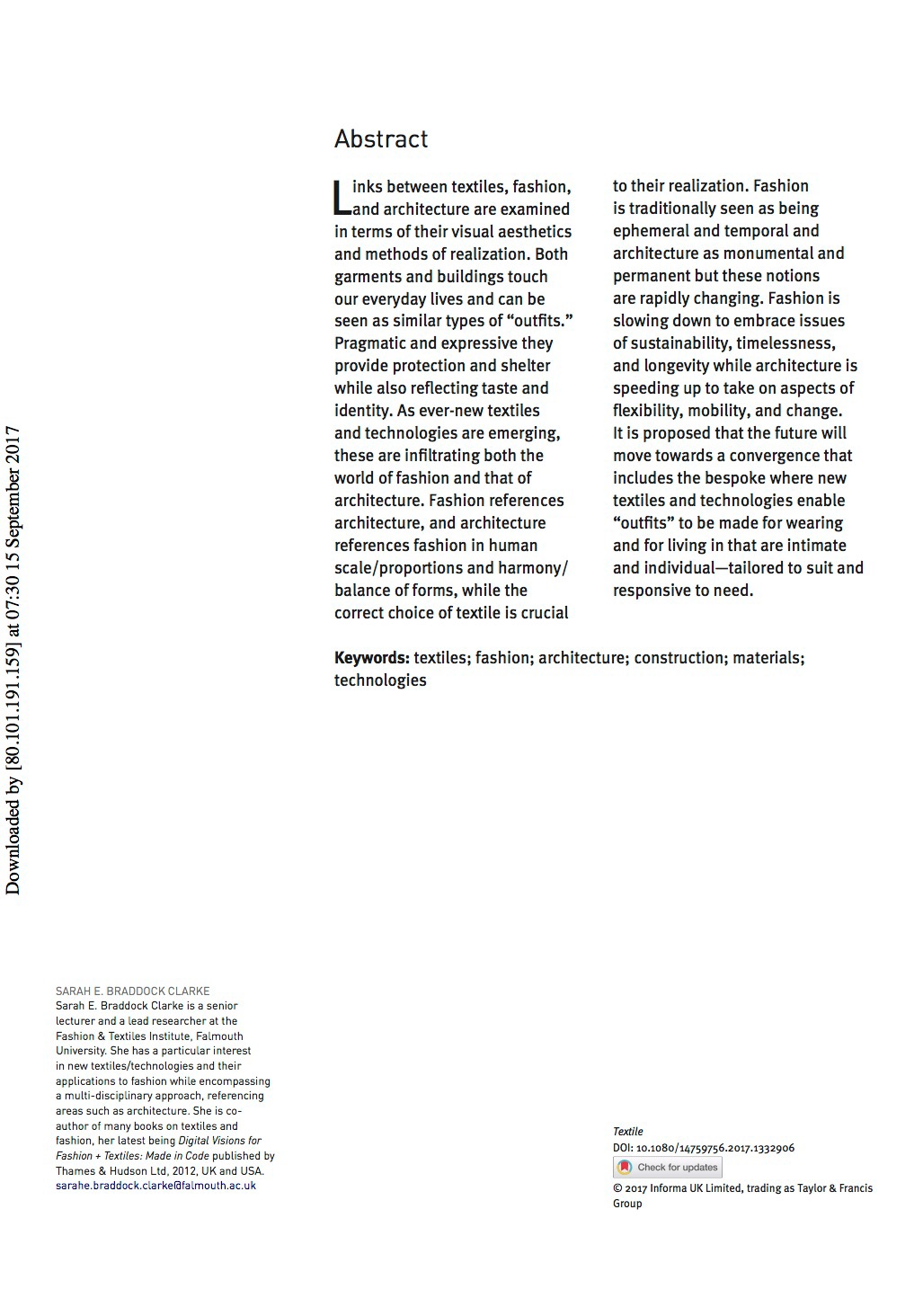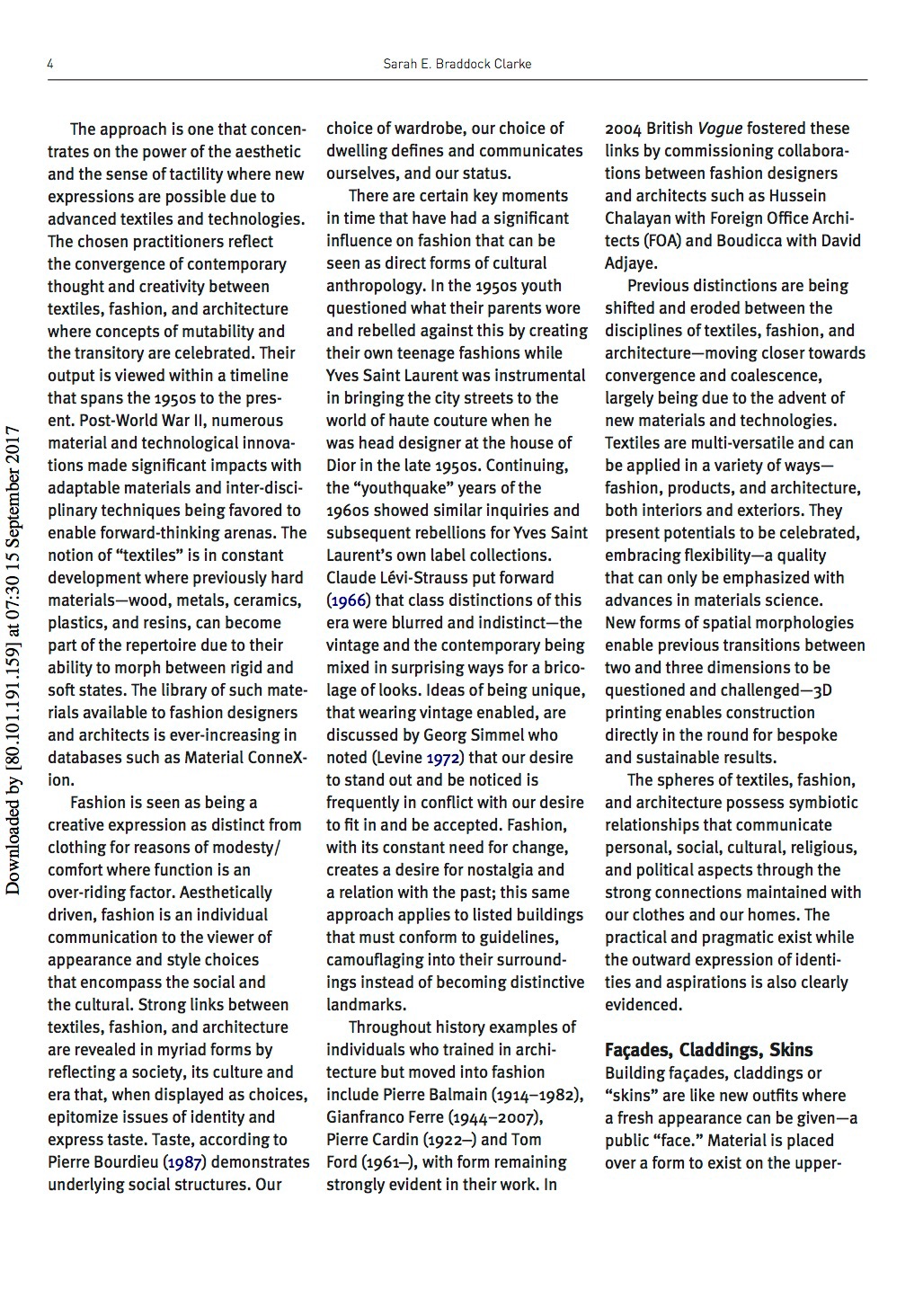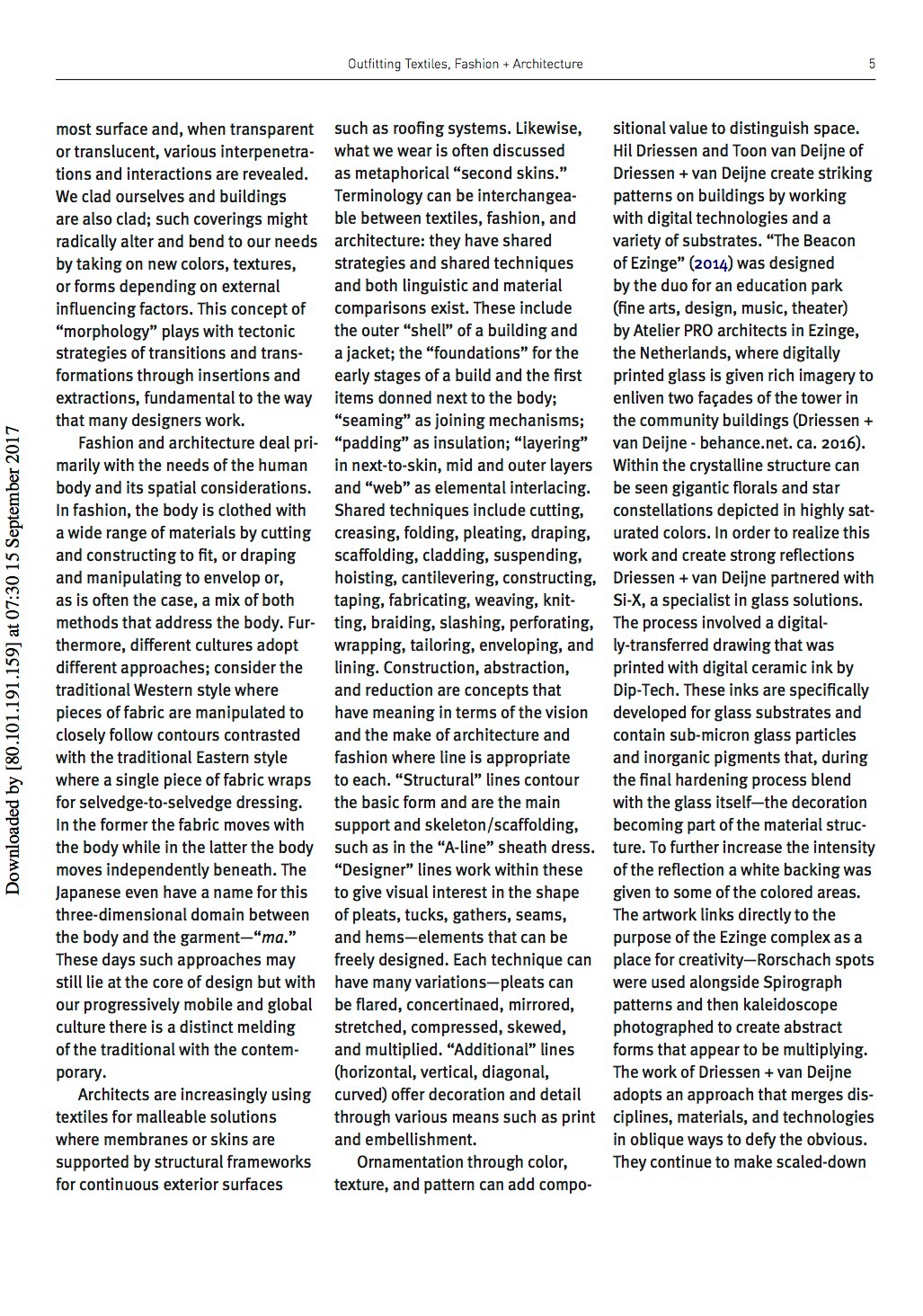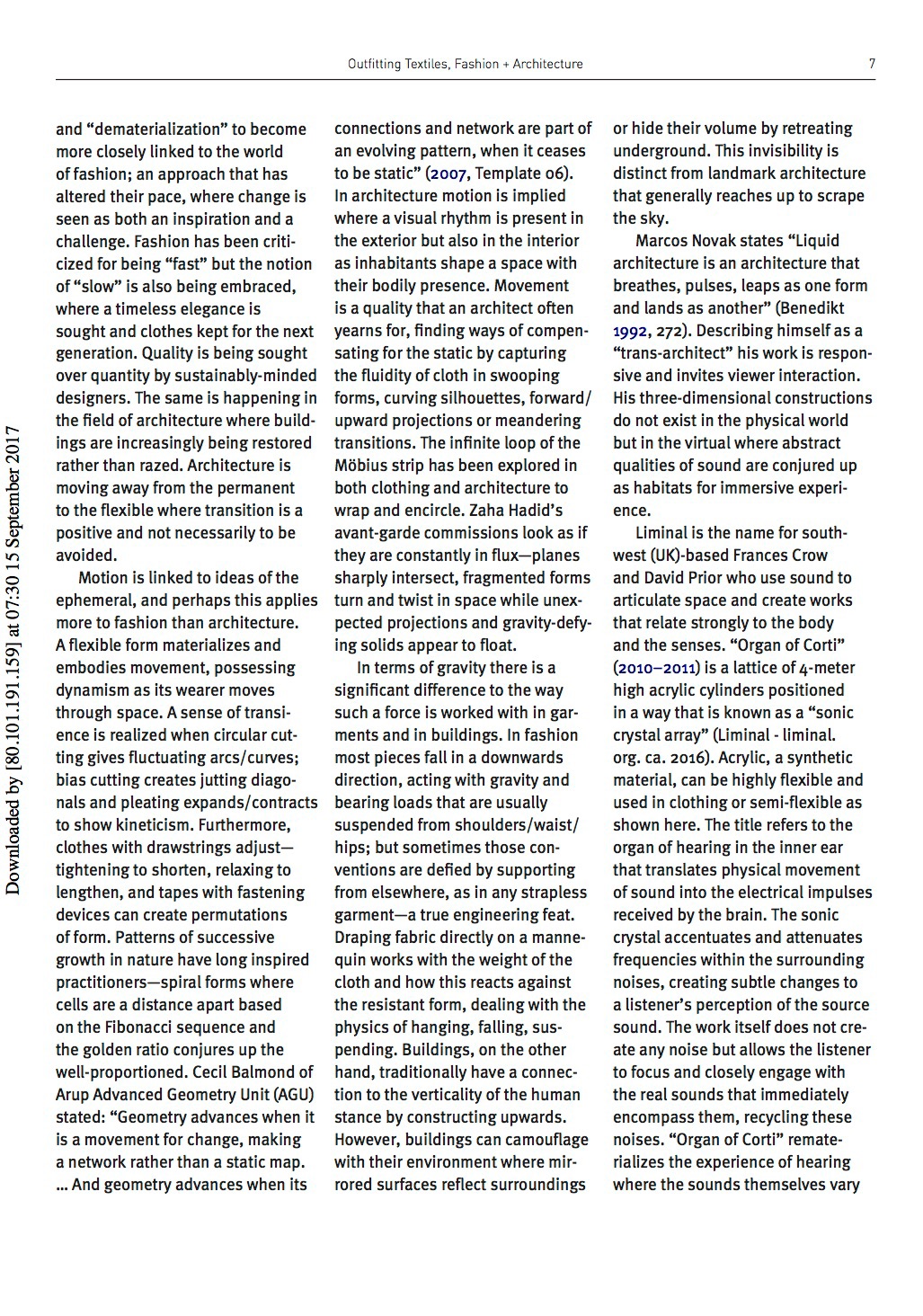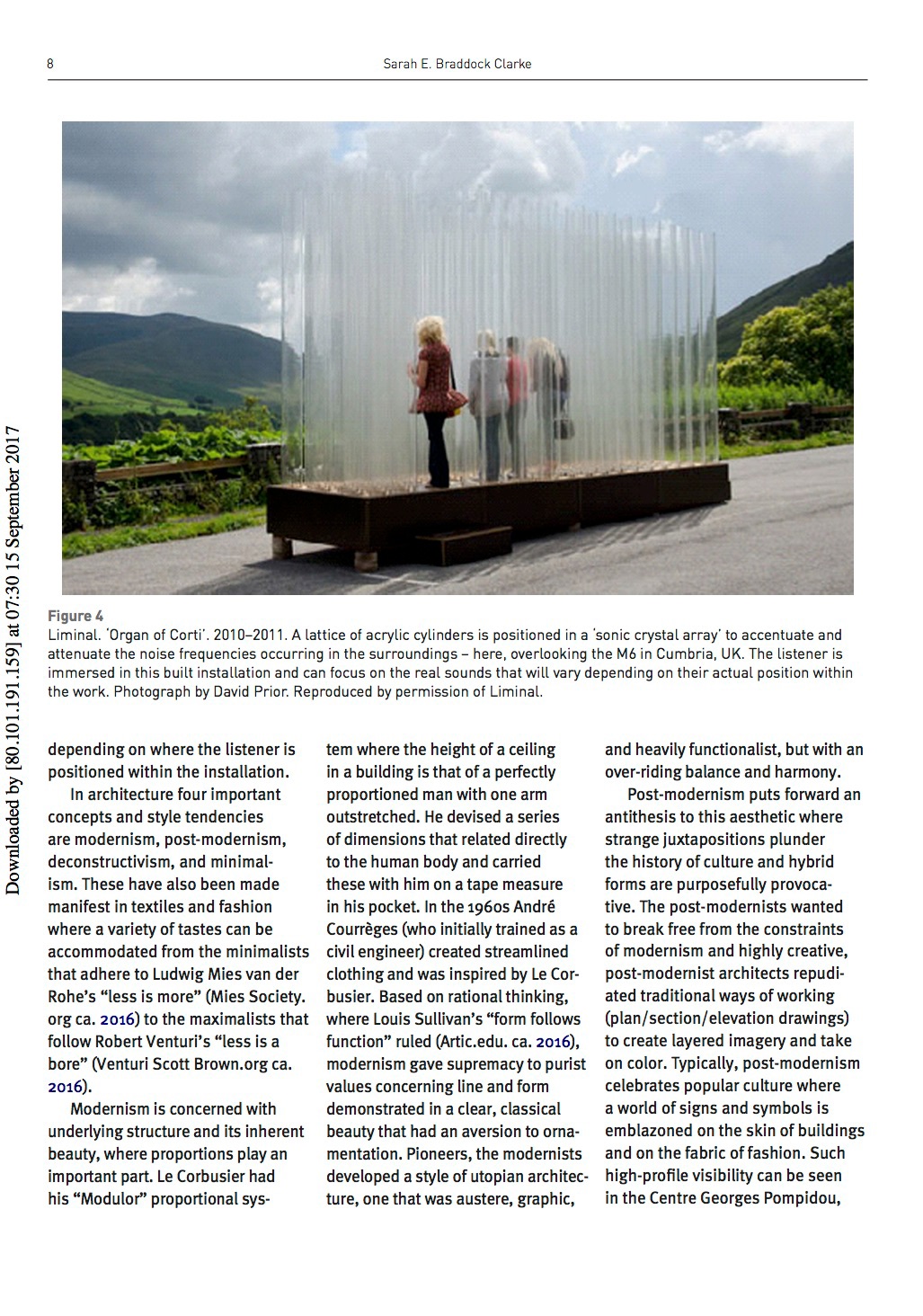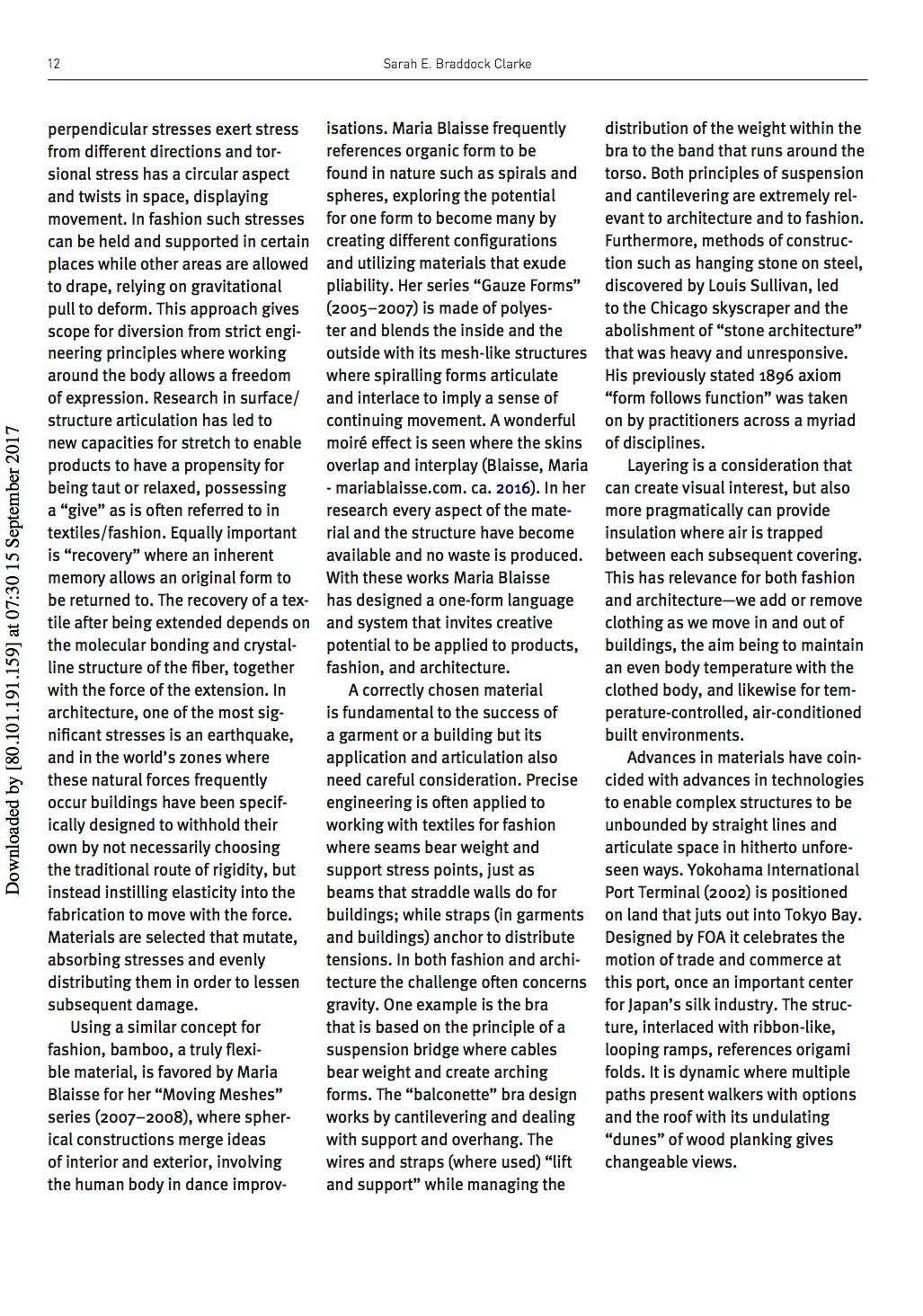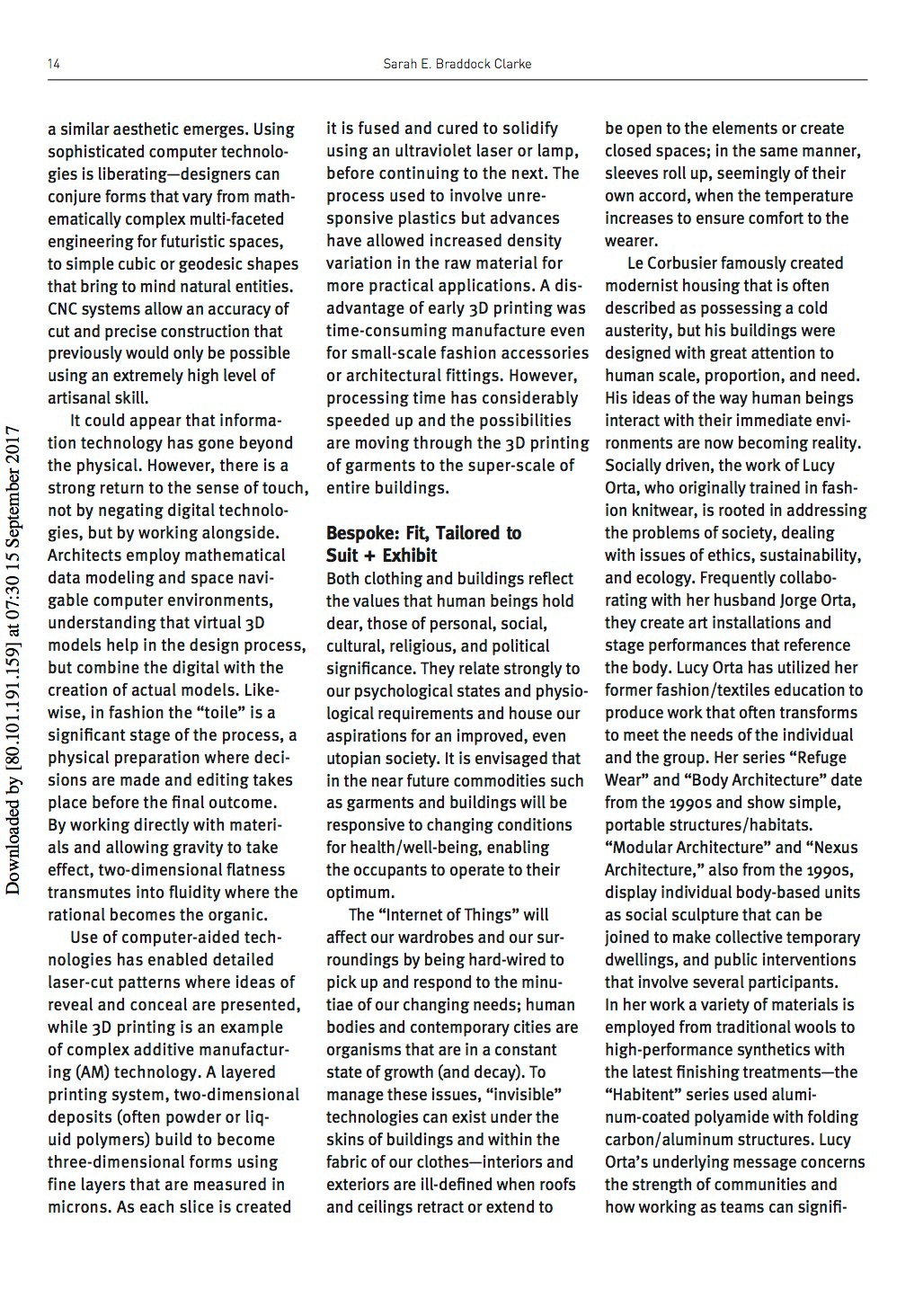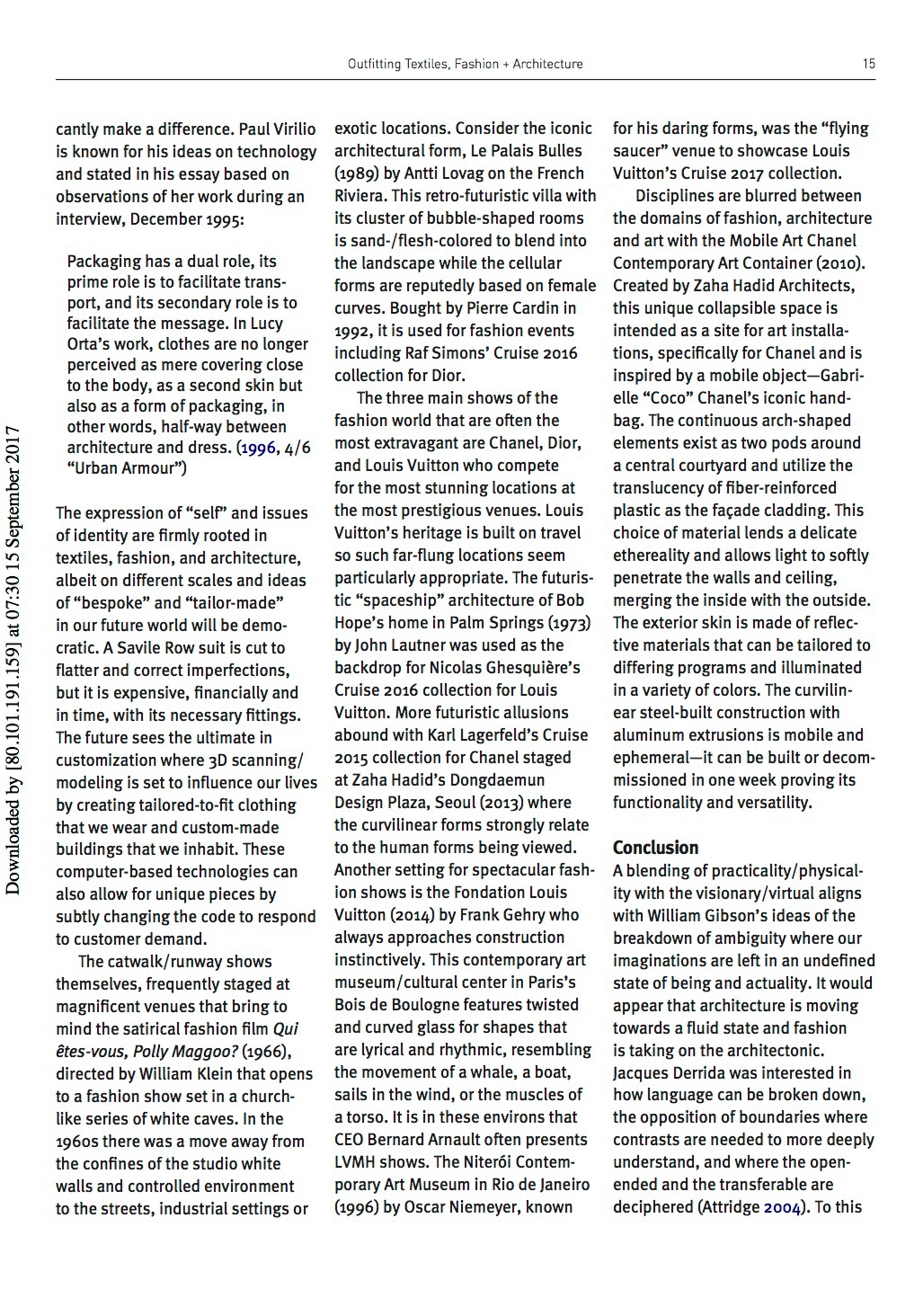
‘The Work’ For Journal Textile: Cloth and Culture
Creative practitioners such as the Dutch duo Hil Driessen and Toon van Deijne of Driessen + Deijne have collaborated to create striking patterns on buildings that reference textiles but work with digital technologies and a range of substrates. One example is work that they completed in 2014 titled ‘The Beacon of Ezinge’, for an education park (fine arts, design, music and theatre) in Holland designed by Atelier PRO architects where digitally-printed glass is given rich patterns to enliven the two façades of the tower in the community buildings.
In the crystalline structure can be made out depictions of gigantic florals and constellations of stars in highly saturated and deeply intense colors of oranges, pinks and yellows. In order to realise this striking work and create strongly reflecting effects Driessen + van Deijne sought partnership with Si-X, a specialist in glass solutions. The process involved an initial drawing that was then digitally transferred and printed with digital ceramic ink by Dip-Tech (a world-leader in digital ceramic glass printing technology that uses the latest digital glass printers and a wide range of colors of digital ceramic inks). These inks are specifically developed for glass substrates and contain sub-micron glass particles and inorganic pigments that, during the final hardening process blend with the glass itself to become one – the decoration becomes part of the material structure. The sophistication of the process also allows a faithful rendering of the original source material, the initial drawing. To further increase the intensity of the reflection a white backing was given to the coloured areas, but only in some areas to allow aspects of the inside and the outside to merge.
The artwork linked directly to the purpose of the Ezinge complex as a place for creativity and imagination where Rorschach spots, symmetrically-aligned imagery used within psychological tests as visual interpretations that hold significant meanings, were used alongside Spirograph patterns and then kaleidoscope photographed to create abstract forms that appear to be multiplying - dynamic and alive.
The work of Driessen + van Deijne adopts an unusual approach that merges disciplines, materials and technologies in oblique ways that defy the obvious and the logical. They continue to make scaled-down physical models of their proposals in order to see how their use of materials and technologies will work in the imagines 3D scenario and in this way blend the analogue with the digital.
Sarah E. Braddock Clarke

